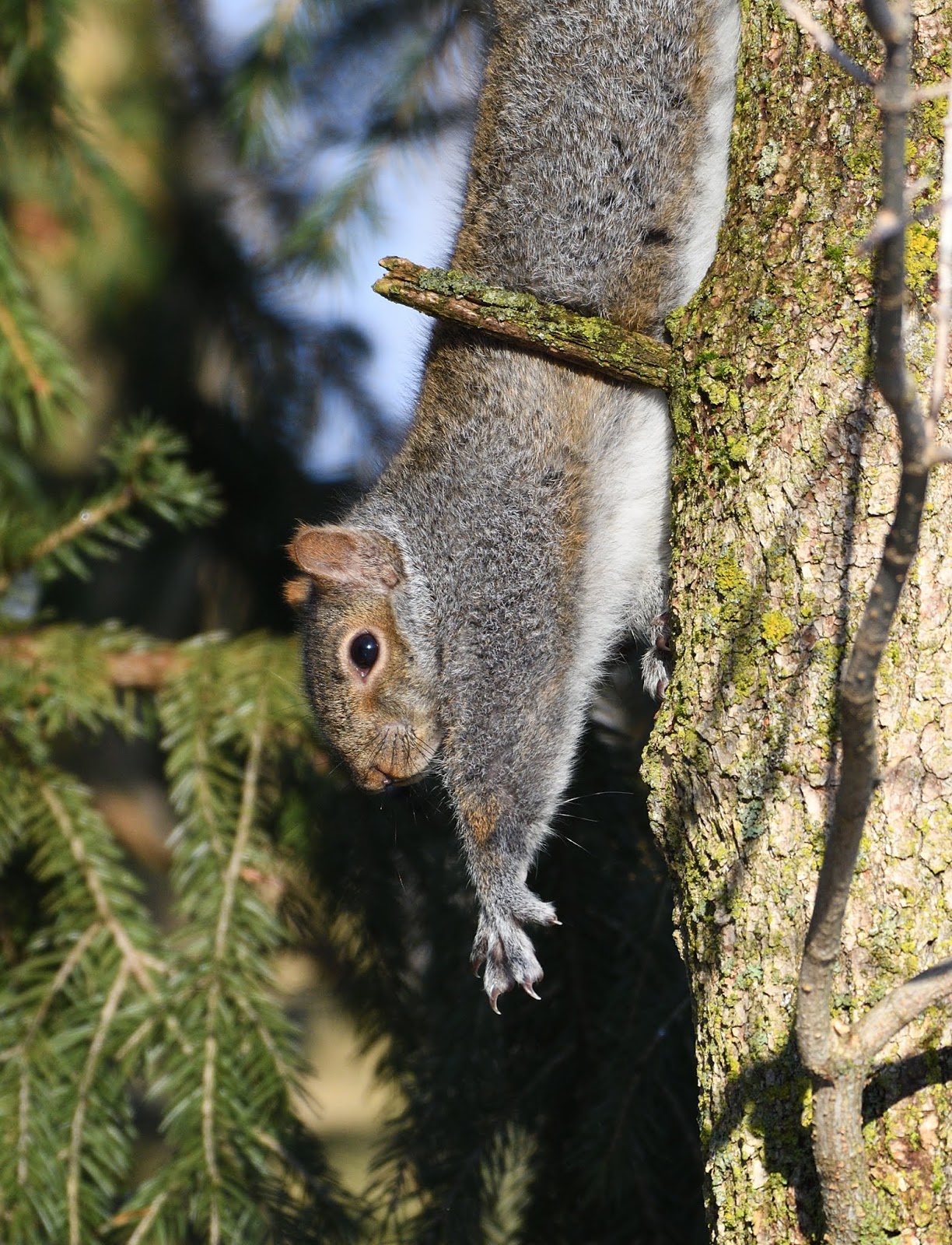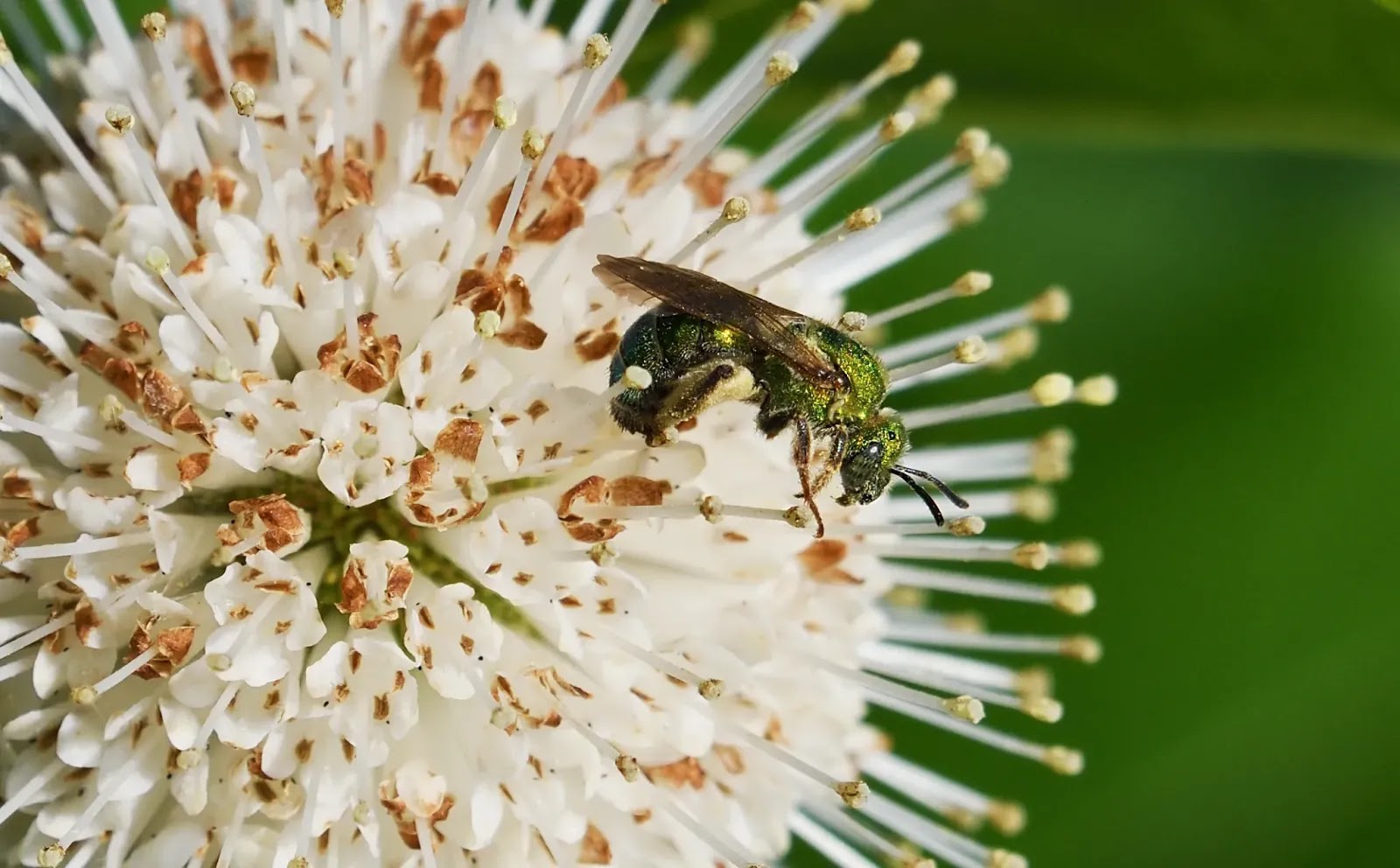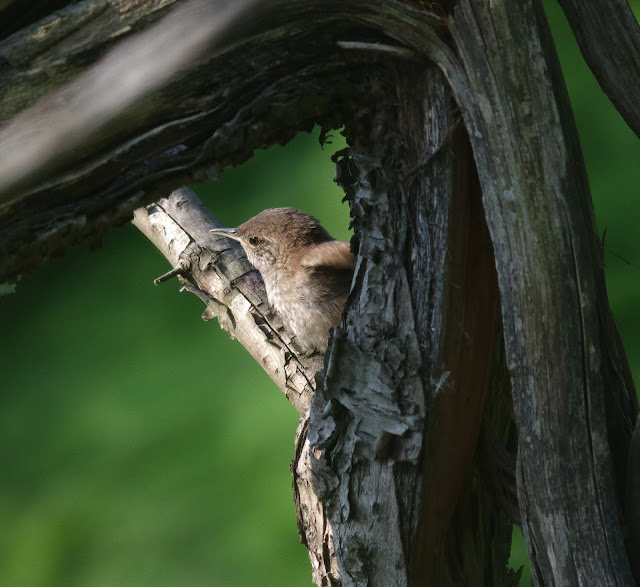Cardinal Red
Having moved from the UK to Canada almost 19 years ago, I have to say that I do at times miss some of the native British birds. For example, the different finches with their bold colours, the kestrel which can hover motionless in the strongest winds, the dipper from the rivers and streams which swims under the water as it hunts for food and is aptly named for its bobbing motion. But on balance, what I miss has been replaced by birds that are just as captivating.
One definite plus in Ontario is the cardinal with its flamboyant head crest and its ridiculously bright red feathers.
As I already mentioned, the weather was beautiful this morning. The fingerless gloves that I had brought with me were not needed at all. The birds and squirrels also seemed to be really enjoying this weather.
I watched three red-bellied woodpeckers as they chased each other from one tree to the next. They never let me get close enough for any photos as they were constantly on the move, up high in the treetops. A little later though, one red-bellied woodpecker did come down close enough for these photos.
I have never seen so many red-bellied woodpeckers at Lakeside Park. They appeared to be present for the whole of my time at the lake.
One definite plus in Ontario is the cardinal with its flamboyant head crest and its ridiculously bright red feathers.
These photos were taken on a gloriously mild and sunny February the 3rd. The contrast of the bright morning sunlight really brought out the vivid red of this cardinal's feathers.
But why are cardinals so red? Well, they do say that you are what you eat, and cardinals do love red berries.
Cardinals do actually create the redness in their feathers from the red foods in their diet. Without the carotenoid pigments that are readily available in these red berries, and also in other food sources, cardinals would not be able to make that tell-tale red colour. Thankfully there are lots of red berries at Lakeside Park.
Another family of birds I miss from the UK is the tit-mouse family. Small birds which forage in the safety of numbers with woodpeckers, treecreepers and nuthatches throughout the winter months. There are blue-tits, great-tits, my favourites the long-tailed-tits and more. What I have lost in variety has been more than replaced by sheer volume. It didn't seem to matter where I was at Lakeside Park this Monday morning, I was continually surrounded by the only relative of the titmouse family in Ontario, the endearing chickadee.
I watched three red-bellied woodpeckers as they chased each other from one tree to the next. They never let me get close enough for any photos as they were constantly on the move, up high in the treetops. A little later though, one red-bellied woodpecker did come down close enough for these photos.
I have never seen so many red-bellied woodpeckers at Lakeside Park. They appeared to be present for the whole of my time at the lake.
Another constant companion was the snowbirds (dark-eyed juncos) as they flitted through the ground cover and bushes.
I had put the following photo aside as it looked at first glance to be just another song sparrow. On closer inspection, it shows none of the streaks on the chest that I would expect for a song sparrow. I had to rely on my Merlin app again as I am still not that confident with sparrows in Ontario. The result I was given and the only one that matches the colouring and markings is a swamp sparrow.
One final photo from Lakeside Park this morning. A grey squirrel enjoying the sunshine and having the best stretch ever.
A few days later we had another gorgeously sunny morning and during a walk through Highbrook Park, I came across some goldfinches.
The goldfinches were feeding on seeds held in the cone-shaped fruit of trees which I found after some searching to be tamarack trees (American larch).
It took me a while to identify the trees, as the tamarack is actually a conifer that loses its needles in the winter, a deciduous conifer. The seeds of the tamaracks also attracted lots of chickadees, and I can never have enough chickadee photos.
Of course, no post is complete without a cute red squirrel photo, so here it is. Taken a few days later at Lakeside Park, under a much duller sky.
Not to be outdone by the red squirrels, here is a cute grey squirrel photo, taken on the same day. The grey squirrel was doing its best to blend into the wonderfully gnarly bark of the old willow tree at the bottom of the lake.
On the theme of cute, I have to add this photo of a downy woodpecker, taken at the Borden Wetlands. You can really see how the woodpecker uses its stiff tail feathers for support. It also uses them to brace itself when pecking.
I am constantly learning about the wildlife here, which birds migrate and which stay through the winter months. Robins, in particular, seem to migrate, but not all of them. A few hardy birds decide to stay and overwinter in Ontario. This robin was at Highbrook Park.
Four days after that photo, I have to update my comment, because, even though some robins do overwinter, it seems more likely that the robin in the photo was part of the migration north. The next photo was taken near my home and the robin was one of at least a dozen robins who were feeding in the bushes along a small stream.
Copyright © wildlakeside.blogspot.com 2020 Scott Atkinson All Rights Reserved.





















Comments
Post a Comment